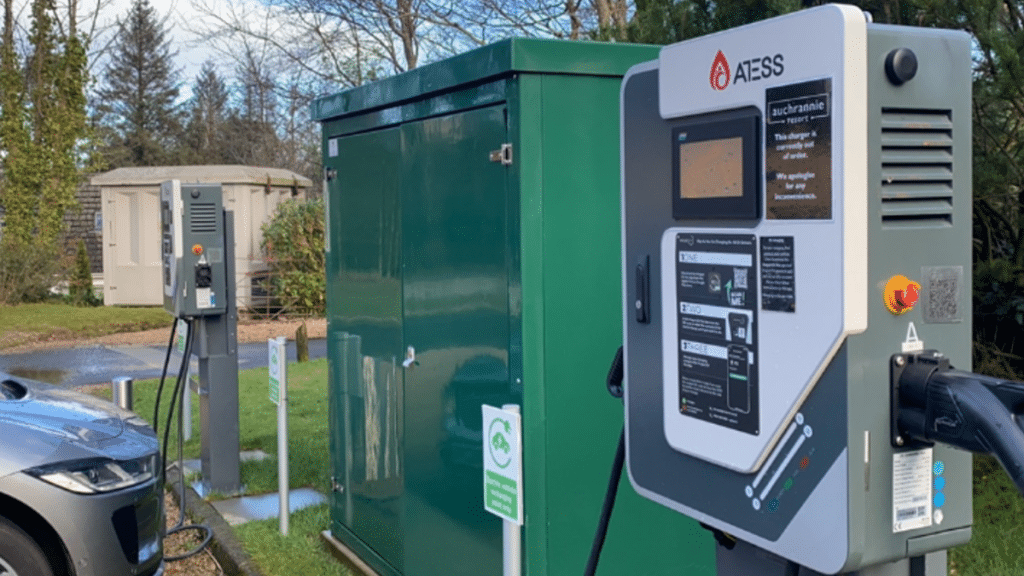The electric vehicle (EV) market has experienced remarkable growth in recent years. In 2023, the worldwide sales of electric vehicles (EVs) nearly reached 14 million units, representing 18% of the total vehicles sold[1]. Due to this surge in EV demand, the need for efficient charging solutions is also rising at a rapid pace.
Currently, both fast and slow EV charging stations are being used by EV owners. In 2023, the number of public charging stations installed worldwide increased by 40% compared to 2022, with fast chargers growing faster than slow chargers[1]. Fast charging stations have become a critical necessity in meeting the growing EV demand, as they significantly reduce charging times and enhance the EV charging experience and appeal of these vehicles.
Next, let’s delve into the differences between fast charging vs slow charging, as well as AC charging vs DC charging, to gain a deeper understanding of each system.
Fast Charging vs. Slow Charging
1. Technology and Charging Speed
Slow charging typically relies on AC power, which flows through the EV’s onboard charger and is then converted to DC for storage in the battery. This gradual process is common in home charging setups and some public stations. While this system is straightforward and does not require complex installations, it also takes a lot of time, which reduces its appeal. You can even expect to spend 18 to 24 hours for a full car recharge, depending on battery size and capacity.
On the other hand, fast charging uses DC power to directly charge the battery. But why is DC charging faster than AC? This is because it delivers current directly to the EV battery and bypasses the vehicle’s onboard converter. Depending on the charger and the EV’s capacity, fast chargers can provide an 80% charge in as little as 20 to 30 minutes.
2. Investment Cost and Economic Benefits
There is also a stark difference in the pricing of both setups. Due to higher demand, the need for advanced technology, and attractive charging times, fast commercial EV charging station cost is relatively high. However, the return on investment is exceptionally high.
For operators and public charging providers, the fast charging stations attract a larger number of EV users because the ability to charge EVs quickly saves EV owners a considerable amount of time. This enhances their EV charging experience and increases the likelihood of them choosing these stations over slower alternatives.
Meanwhile, the convenience provided to EV drivers translates into more frequent visits to these stations, leading to higher revenue streams. This, in turn, results in a faster return on investment for the operators.
ATESS Commercial DC Fast Charging Station
ATESS commercial DC fast charging stations can meet the rigorous demands of today’s EV market. It supports both electric buses and passenger vehicles and provides fast and reliable charging on the go. A standout feature of the ATESS station is its super-fast charging capability. Within 10 minutes, EVs can gain up to 400 km in range. The charging stations are capable of supporting charging at voltages up to 1000V, which enables them to accommodate a variety of electric vehicle brands. Additionally, the stations are equipped with a cable balancer so that users can handle the charging cables better and increase their EV charging experience.
Applications of ATESS Commercial DC Charging Station
Let’s have a look at how ATESS charging station makes everyone’s EV charging experience better.
1. Refueling Charging Station for Public Transportation
ATESS DC fast charging stations are transforming the EV charging experience for public transportation in urban areas, serving as ideal refueling hubs for taxis, buses, and other service vehicles. They offer quick and efficient charging or battery swaps, exponentially increasing the operational efficiency of public transportation and taxi industries so that the vehicles spend less time charging and more time serving passengers.
2. Highway Service Stations
This charging station is also a reliable option for long-distance EV travelers due to its ability to quickly top-up their vehicle within minutes, which allows them to continue the journey with minimal delay. This ensures a smooth and reliable EV charging experience on highways, making long-distance travel more convenient and accessible for EV owners.
3. Heavy-Duty Fleet Charging Stations
For logistics hubs and fleet operations, ATESS fast chargers support heavy-duty vehicles like trucks and delivery vans. These stations promote green logistics by enabling quick recharges. They reduce vehicle downtime and help fleet operators lower operational costs while meeting sustainability goals. By streamlining the EV charging experience for heavy-duty fleets, ATESS contributes to more efficient and eco-friendly logistics operations.
Seeing all these application scenarios, it is easy to find how an ATESS charging station makes the EV charging experience better for every EV owner.
Wrapping-Up
ATESS DC fast charging stations are playing a leading role in satisfying the increasing demand for reliable charging solutions in the EV market. This charging solution is a perfect EV station for charging network providers, urban planners, municipalities, and highway service operators. They not only enhance users’ EV charging experience but also drive sustainable growth in transportation infrastructure. Adopting such efficient and scalable charging solutions will help meet the rising demand for EVs and support a cleaner and greener future.
Reference
- Available at:
https://www.iea.org/reports/global-ev-outlook-2024/executive-summary
